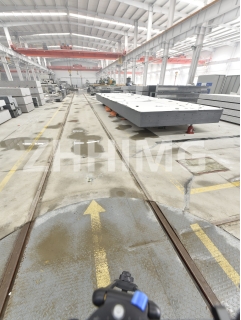A granite assembly for Computed Tomography (CT) is a specialized design that is utilized in the medical field to perform highly accurate and precise scans of the human body. CT scanning is one of the most significant technological advances in the field of medical imaging, as it enables physicians to diagnose various health conditions accurately. The imaging equipment for CT scans uses X-ray technology to create a 3D image of the body, which allows doctors to locate and identify abnormal growths, injuries, and diseases with minimal invasiveness.
The granite assembly for CT consists primarily of two parts: the granite gantry and the granite tabletop. The gantry is responsible for housing the imaging equipment and rotating around the patient during the scanning process. In contrast, the tabletop supports the patient's weight and ensures stability and immobility during the scan. These components are made from high-quality, durable granite, which has superior properties to avoid distortions caused by environmental variations, such as temperature and humidity changes.
The granite gantry is designed to integrate different components required for CT scanning, such as the X-ray tube, detector array, and collimation system. The X-ray tube is situated inside the gantry, where it emits X-rays that penetrate the body to create a 3D image. The detector array, which is also located inside the gantry, captures the X-rays that pass through the body and forwards them to the computer system for image reconstruction. The collimation system is a mechanism used to narrow the X-ray beam to reduce the amount of radiation that patients are exposed to during the scan.
The granite tabletop is a critical component of the CT system as well. It provides a platform that supports the patients' weight during scanning and ensures that a stable, motionless position is maintained during the entire process. The tabletop is also equipped with specific positioning aids, such as straps, cushions, and immobilization devices, which ensure that the body is in the right position for scanning. The tabletop must be smooth, flat, and free from any deformation or distortion to prevent any artifacts in the images generated.
In conclusion, the granite assembly for CT scanning plays a critical role in the accuracy and precision of the medical imaging process. The use of high-quality granite in medical equipment enhances the mechanical stability, thermal stability, and low-thermal expansion properties of the equipment, which are essential for achieving the best imaging results possible. With an improved understanding of the design features and the integration of new advances in the components, the future of CT scanning looks brighter and less invasive for patients.
Post time: Dec-07-2023

